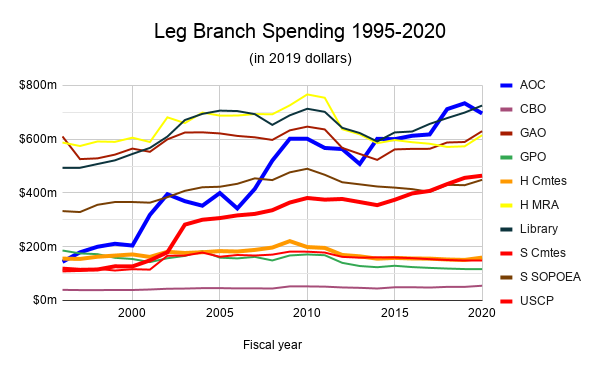Last week House Officers—the House Clerk, Sergeant at Arms and Chief Admin Officer—testified before the House Appropriations Legislative Branch Subcommittee. These officers are responsible for floor and committee proceedings, security and the internal workings of the House. They do the tough behind the scenes work that keeps Congress going. Not sure what their duties entail? We’ve got you covered with some examples from last week’s hearing.
Continue reading “Recap of the House Officers’ FY 2021 Appropriations Request”Tag: Congressional Ops
March Update: Legislative Branch FY2020 Appropriations Items Due Dates
Back in December 2019, Congress passed the Legislative Branch Appropriations bill for FY 2020, starting the clock on dozens of Leg. Branch projects and reports.
Last month, our team reviewed requests from the Leg. Branch approps bill, broke them down by entity, and summarized the deadlines. For those interested in looking at the complete spreadsheet, you can access it here.
We will regularly post a list of items due from the Leg. Branch approps bill, broken down by entity. We also will include which items were due during the previous month at the end of the report.
Expected This Month
Below are the items that are expected in March 2020, broken down by entity:
Staffers Form Bipartisan Association Aiming to Modernize Congress
A new staff association is looking at ways to reform the staff workplace from the inside. The Modernization Staff Association (MSA) is a bipartisan group of staffers whose goal is to improve the efficiency and effectiveness of Congressional staff by modernizing systems that affect their day-to-day operations. The association held its latest meeting last week, focusing on onboarding new members, defining their mission, and creating resources guides for staffers. Roughly 50 staffers attended the meeting. The association continues to grow, with a total of 82 members, all House staffers. According to MSA, they encourage Senate staffers to join as well.
Continue reading “Staffers Form Bipartisan Association Aiming to Modernize Congress”Reforms Included in the House Rules for the 116th Congress
At the beginning of each Congress, House lawmakers adopt rules that will govern the state of play for both sessions of that Congress. The rules of the House of Representatives are a chance for the majority to set priorities as well as implement operational and institutional reforms.
We made a number of reform recommendations — see our report and draft legislative language — several of our favorites made it into the package.
As we are well into the second session of the 116th Congress, we took inventory of standout reforms that made it into the rules package. Scroll down for a summary of where items stand this Congress.
Find the complete House Rules (with explanations) here, and the resolution that ratified the rules (H. Res. 6) here.
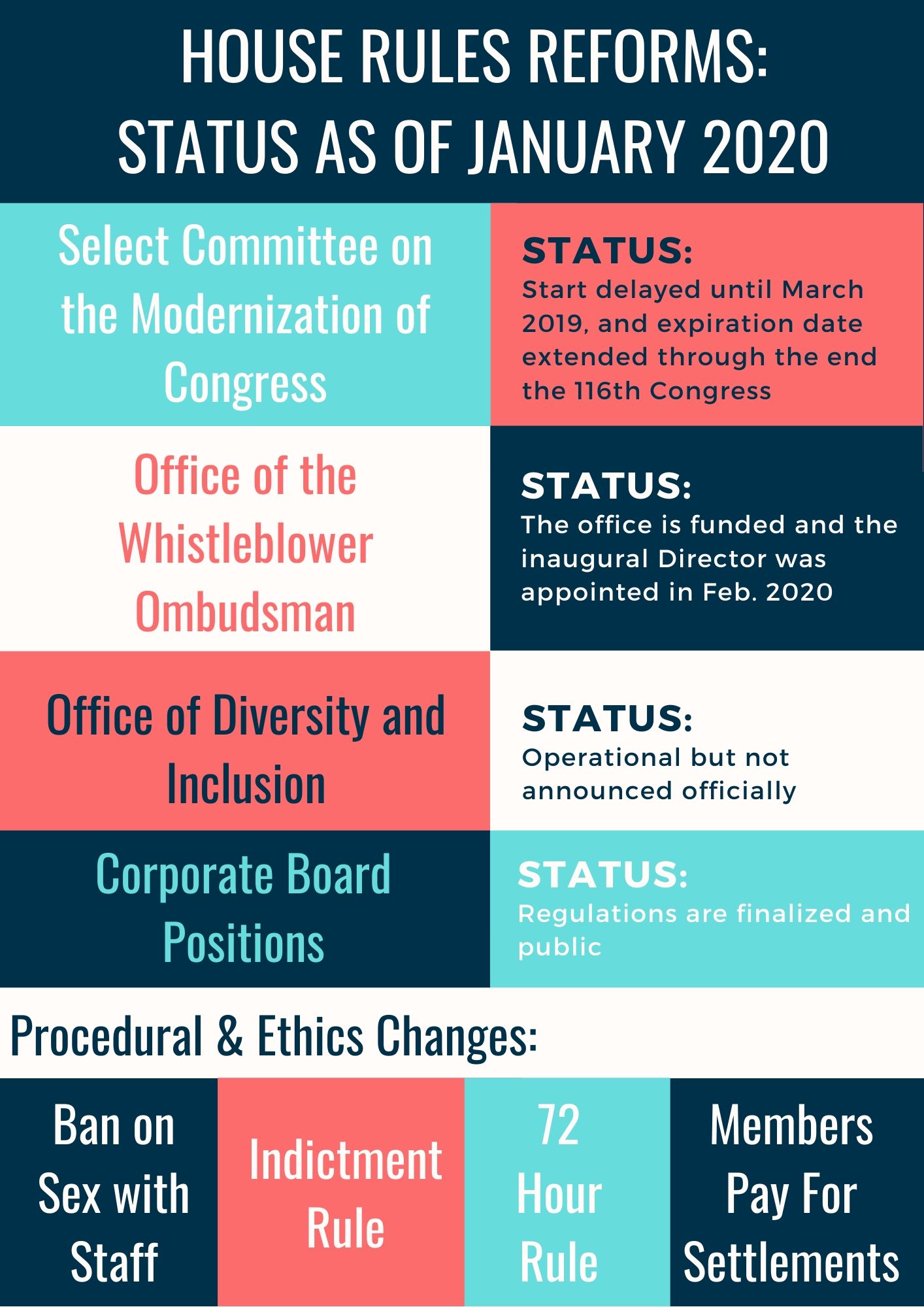
• • •
Continue reading “Reforms Included in the House Rules for the 116th Congress”The Undermining of Congress
The Legislative branch plays a central role in our democracy, but for decades Congress has systematically underfunded congressional operations as compared to the rest of government.
The chart below shows discretionary non-defense discretionary spending from 1995-2020 (in constant dollars). During that quarter-century, non-defense discretionary spending increased by 58%, but spending for the legislative branch increased only by 27%.
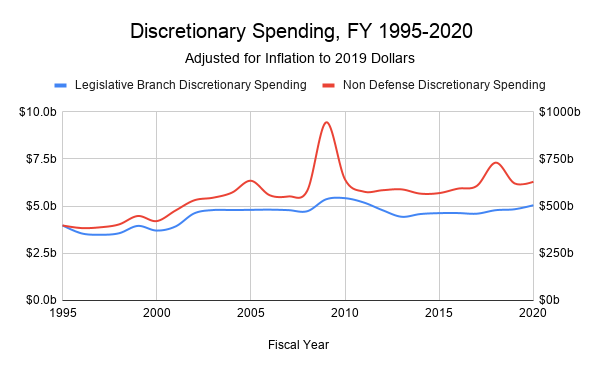
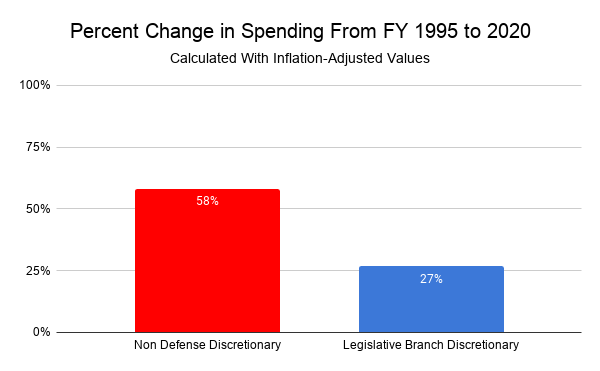
A Primer on Congressional Staff Clearances
Today Demand Progress Education Fund and the Project on Government Oversight are pleased to publish a primer on congressional staff clearances. It is the result of several years worth of research.
Security clearances govern access to classified information. While members of Congress are entitled to access classified information by virtue of the constitutional offices they hold and do not need security clearances, they must rely on their staff to sift through reams of information and brief them on issues. Those staff often do not hold sufficient clearances to access the requisite information, thereby undermining the support they can provide to their superiors and weakening Congress’s ability to legislate or conduct effective oversight.
This primer is a review, to the extent possible with the available information, of how the processes for staff clearance operate in the House of Representatives and Senate (though not in congressional support offices and agencies), who is able to obtain a clearance, and at what level a clearance can be obtained. It specifically focuses on “SCI,” or Sensitive Compartmented Information.
2020 Legislative Branch Wish List
The passage of the Legislative Branch Appropriations bill for FY 2020 back in December started the clock on a number of projects and reports inside the legislative branch. We took a look at the requests, broke them down by office, and summarized the deadlines, which are drawn from the House committee report, the Senate committee report, and the Joint Explanatory Statement.

Paid Parental Leave: Coming Soon To A Congressional Office Near You
America is an Outlier on Parental Leave Policies
America is far behind the rest of the world when it comes to providing employees with paid parental leave. The United States is one of two developed nations that does not provide its workers with any form of paid parental leave, the other being Papua New Guinea.
Roughly 19 percent of American workers have a paid parental leave policy with their employer. The most common duration for paid leave in the US is 6 weeks, while countries in Europe provide anywhere from 6 months to two years.
Continue reading “Paid Parental Leave: Coming Soon To A Congressional Office Near You”Tools Every Congressional Staffer Should Know About
Time is always tight on the Hill for staffers. They work long hours, holidays, and sometimes even through major life events. Between the countless emails, bill markups and committee meetings, dozens of office and caucus events, constituent and advocacy conferences, and making sure that lawmakers don’t miss votes, it can be hard to make time to get real legislating done in an office.
Staffers often have their own methods for the legislative drafting process. Most staffers learn from more senior staff or are just thrown in the deep end. The legislative process can often take days or even weeks, and there are dozens of factors that take control away from staffers.
To help them out, we compiled a list of many of the best free tools that congressional staffers can use to create legislation. We cover the phases of the legislative process, from information gathering to legislative drafting, from markup to floor consideration.
Continue reading “Tools Every Congressional Staffer Should Know About”The Legislative Branch is More Than Congress
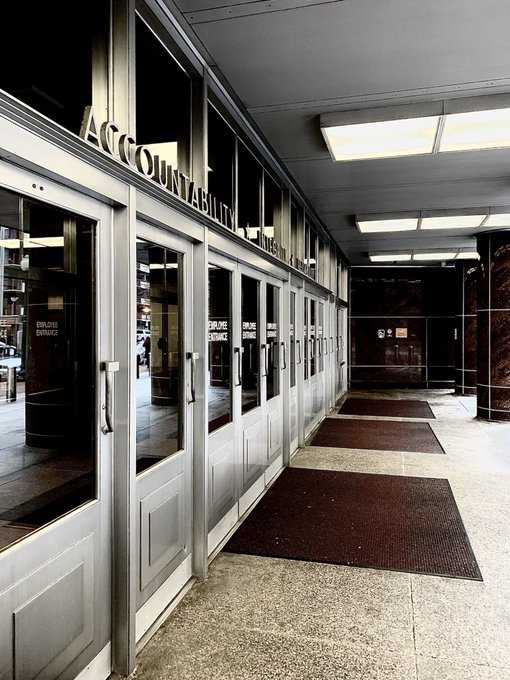
Chaplains, doctors, historians and architects are part of the unseen Legislative Branch. While most know about the House and the Senate, did you know the US Capitol Police takes up more than 10% of the Legislative Branch budget ($456 Million in FY 2019) and has 2300 employees?
This article starts a series highlighting the various offices within the Legislative Branch and the issues that should be considered – in particular the process to appoint the leaders of these various offices. Continue reading “The Legislative Branch is More Than Congress”
